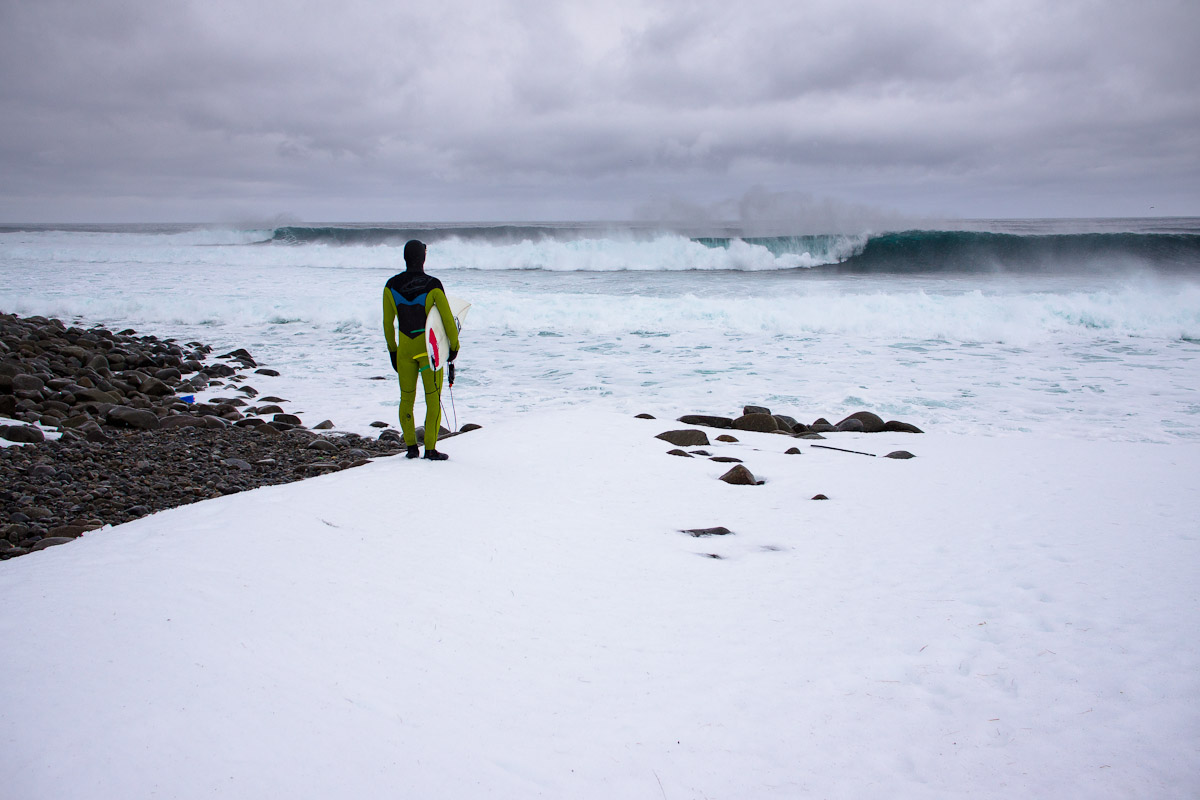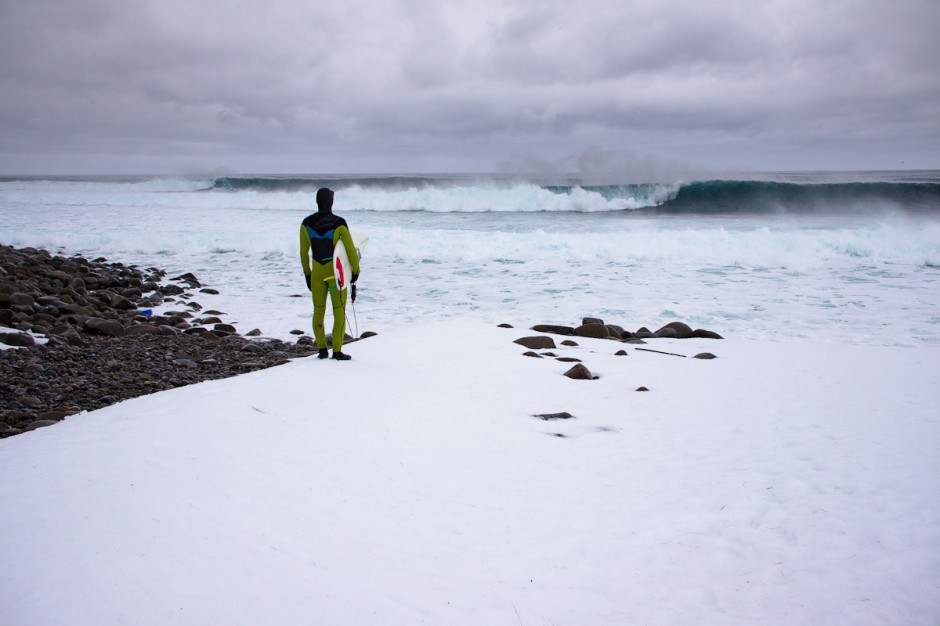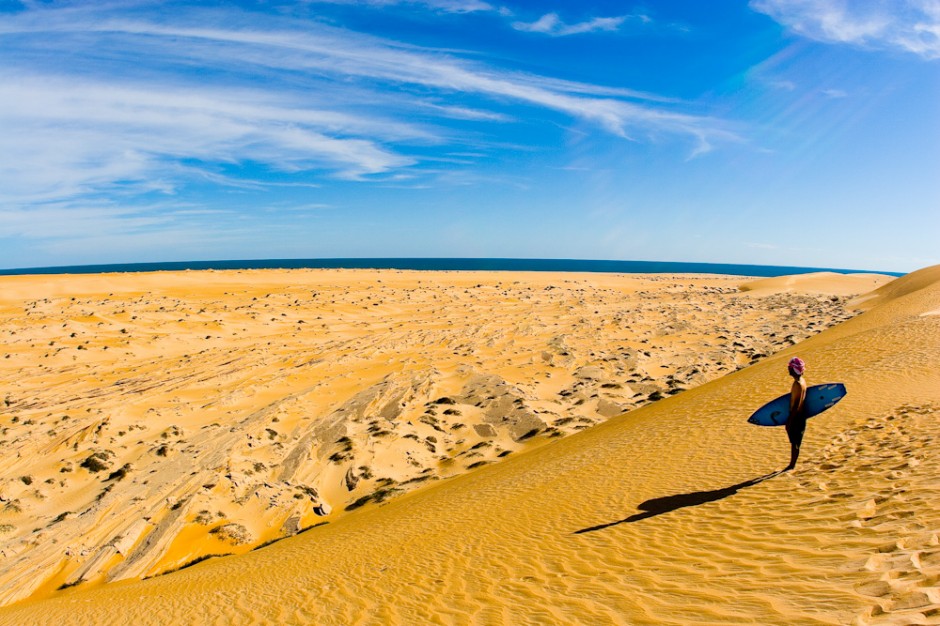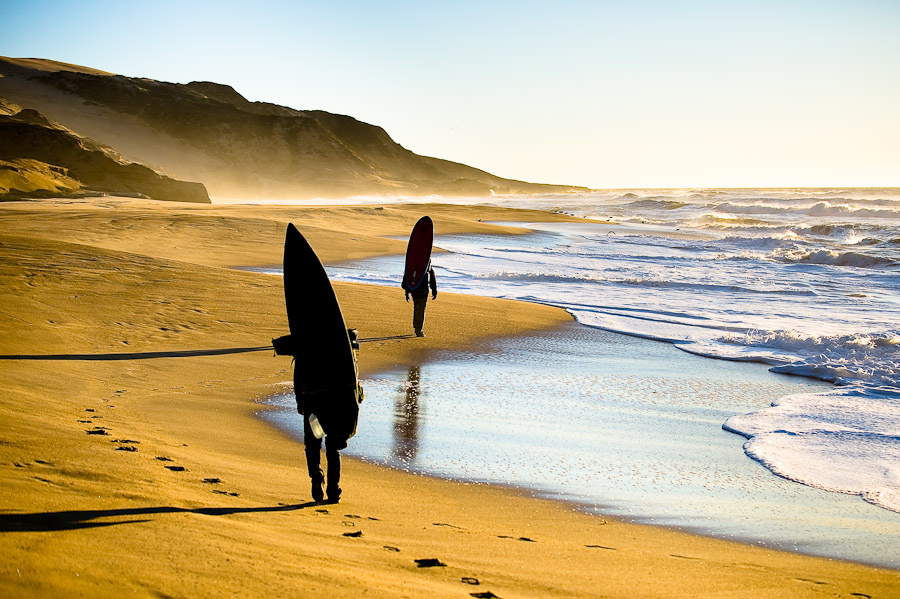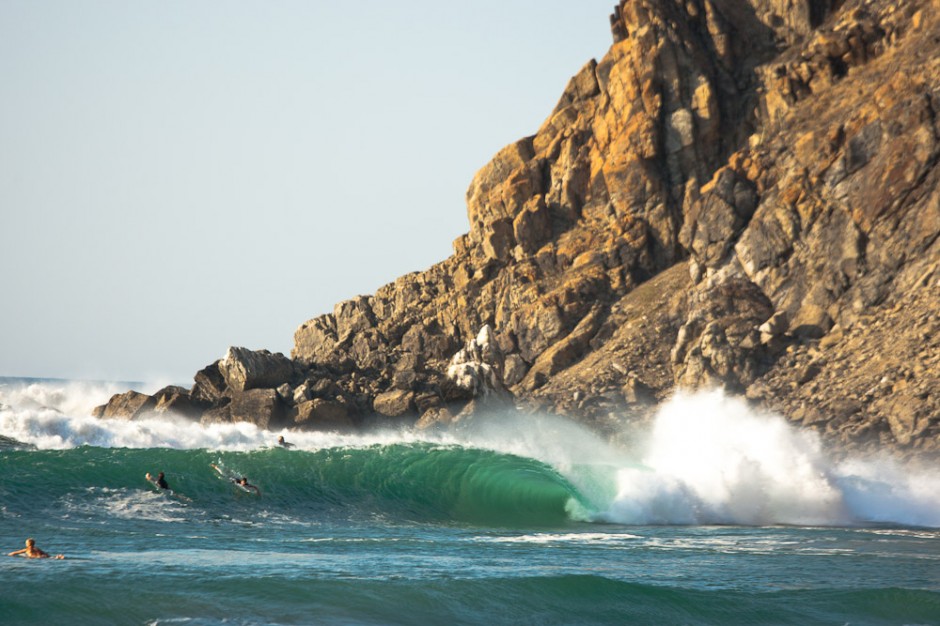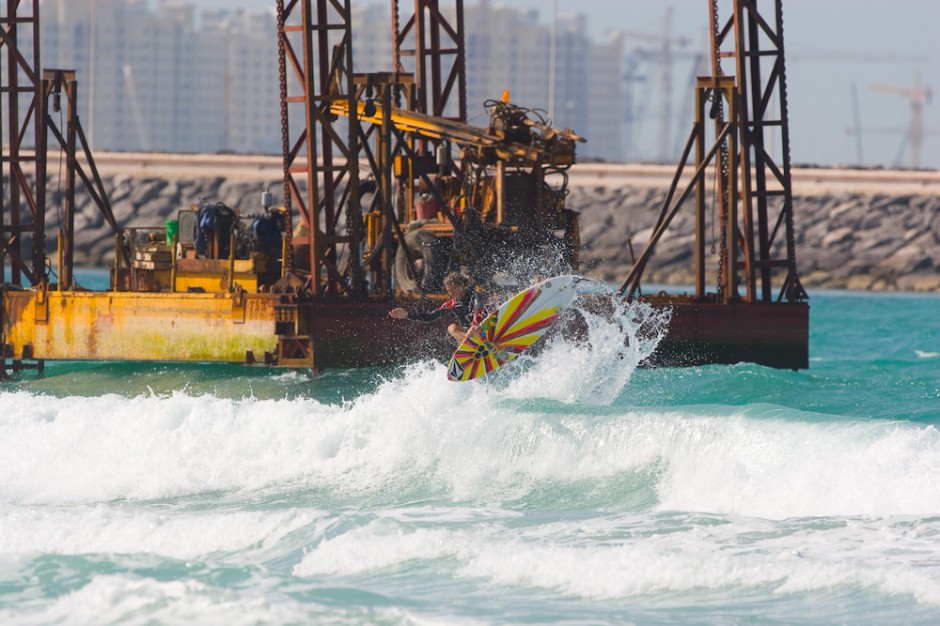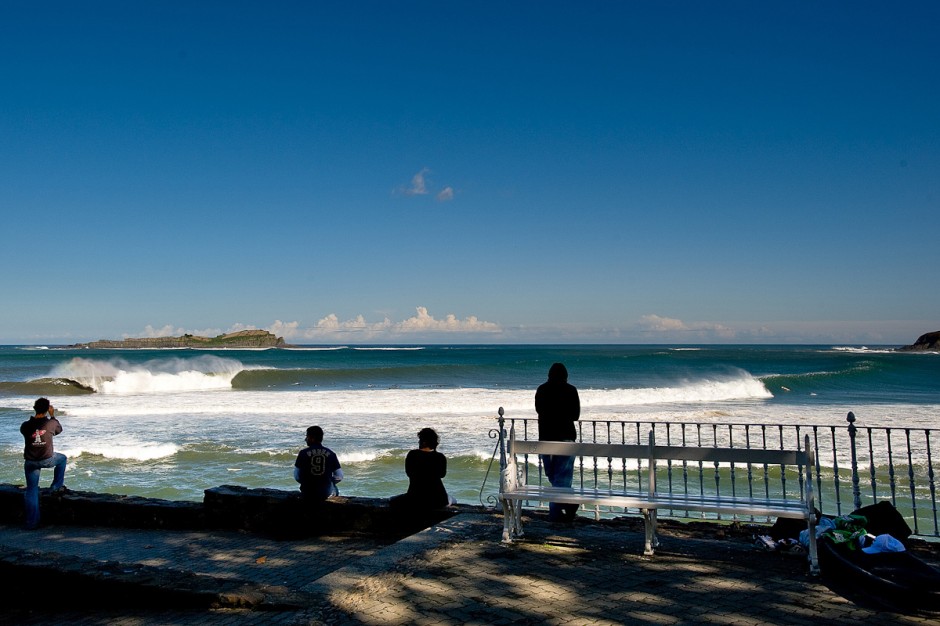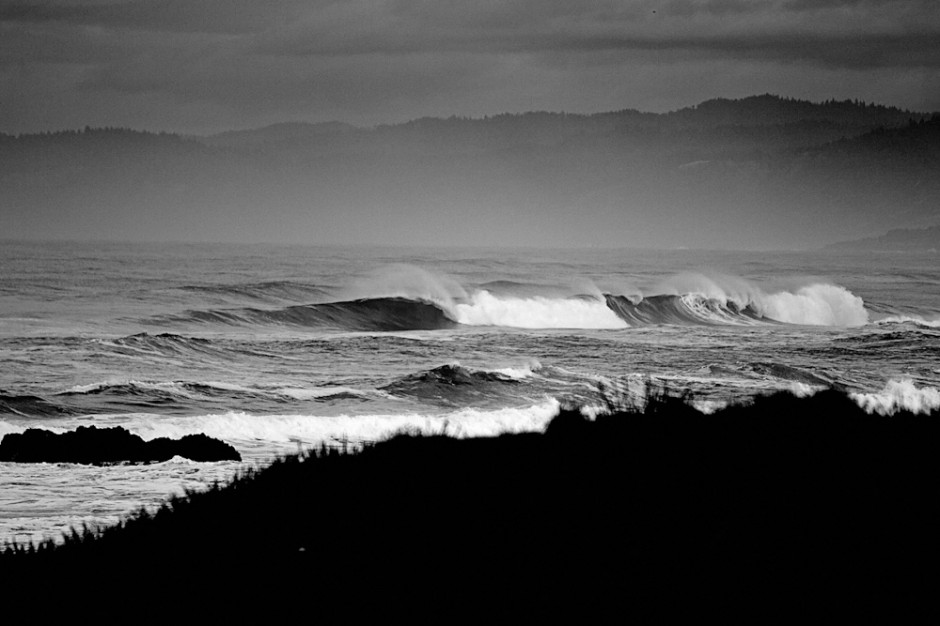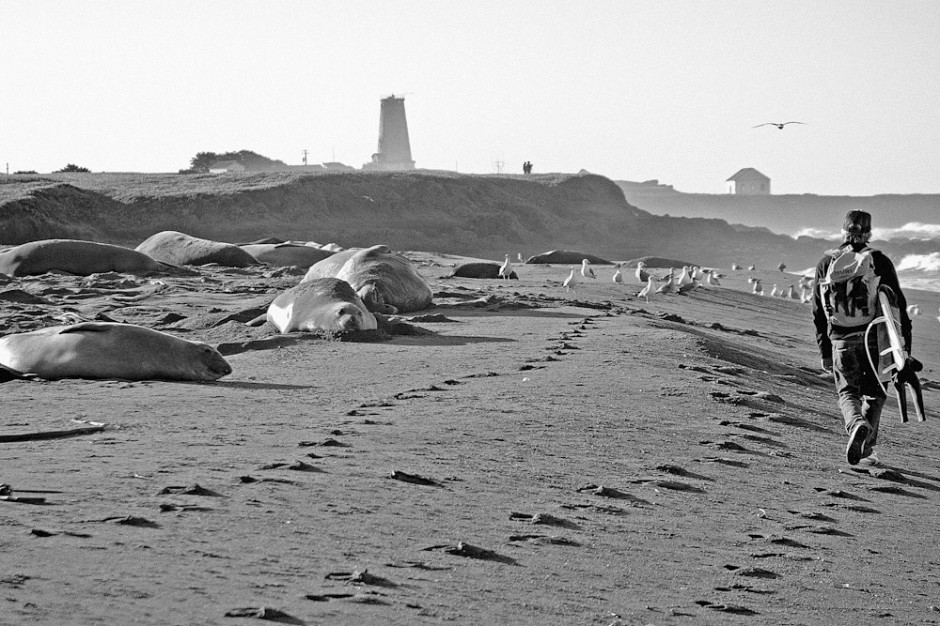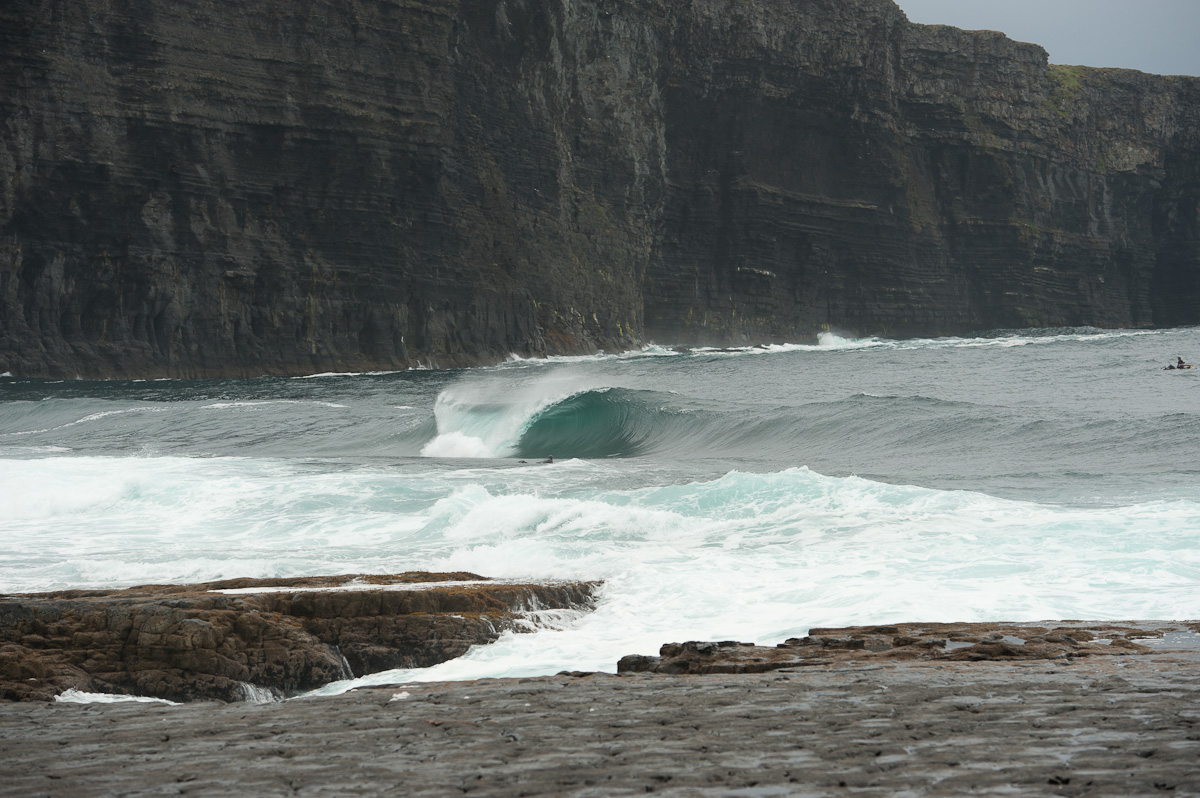Norway
I was awakened by the flurry of wind and snow blowing against the side of our Norwegian cabin. The wind through the valley often reaches 40 mph and it was hard to think in a few hours we would have to leave the warmth of our sleeping bags for the frigid waters out front. Alek Parker was the first to suit up and began his march towards the shoreline. Snow caving beneath his feet, he looks for a place to paddle out. For the moment he is still warm, but that moment will soon be a fleeting memory as the dense icy water will begin to engulf his core.
